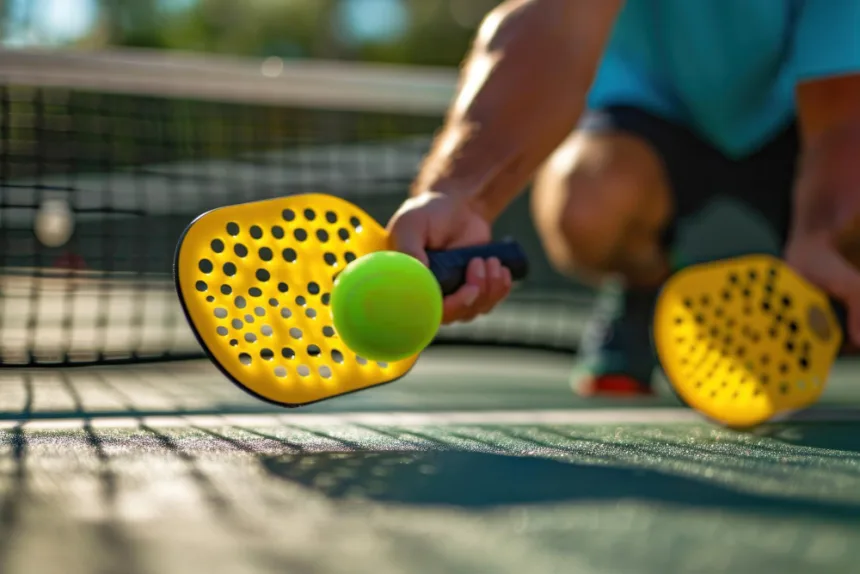Introduction:
Pickleball, a rapidly growing sport that combines elements of tennis, badminton, and ping pong, has captured the hearts of players young and old around the world. This dynamic game is easy to learn but offers a depth of strategy that keeps enthusiasts coming back for more. To fully appreciate the sport and engage in fair and competitive play, it’s essential to understand the pickleball rules. In this comprehensive guide, we’ll break down the key regulations, scoring system, and etiquette that shape the exciting world of pickleball.
The Court:
Pickleball is typically played on a rectangular court that is 20 feet wide and 44 feet long for doubles and 20 feet by 22 feet for singles. The court is divided into two equal halves by a net suspended at the center. Both sides of the court feature a non-volley zone, commonly referred to as the kitchen, which is a seven-foot area adjacent to the net.
Serving:
1. Service Area: The serve must be made diagonally across the court. The server must stand behind the baseline and hit the ball underhand, ensuring it clears the non-volley zone and lands in the opponent’s diagonal service court
2. Faults on Serve: A fault occurs if the server fails to clear the net, hits the ball out of bounds, or violates the non-volley zone during the serve. A server continues to serve until a fault is committed.
3. Double Bounce Rule: The receiving team must allow the served ball to bounce before returning. Similarly, the serving team must let the return bounce before hitting it. After these two bounces, the ball can be volleyed (hit without bouncing).
Gameplay:
1. Scoring System: Pickleball uses a rally scoring system, meaning a point is scored on every serve, regardless of which team serves. Games are typically played to 11 points, and a team must win by at least two points. Tournaments may use a best-of-three-games format.
2. Faults during Play: Aside from faults during serving, other common faults include stepping into the non-volley zone while volleying, hitting the ball out of bounds, and volleying before the ball has bounced on the receiving team’s side.
3. Non-Volley Zone (Kitchen): Players are not allowed to volley the ball while standing within the seven-foot non-volley zone. However, they can enter the zone to play a ball that has bounced in it.
4. Double Hit: A player cannot hit the ball twice consecutively, whether intentionally or unintentionally. If this occurs, it results in a fault.
Discover effective “Ways to Add Storage Space to Your Home” through our latest blog post. Explore practical solutions for maximizing space utilization within your living environment.
Etiquette and Sportsmanship:
1. Line Calls: Honesty is a fundamental aspect of pickleball. Players are expected to make their own line calls and resolve disputes amicably. If uncertainty persists, players may opt for a replay.
2. Quiet During Play: To maintain focus and sportsmanship, players should refrain from making noise or distracting gestures during rallies.
3 Paddle Etiquette: Players should avoid slamming their paddles on the court, as it can be disruptive and may damage equipment.
Explore our comprehensive manual on sports bikes for in-depth insights into performance tuning and maintenance, ensuring optimal riding experiences.
Conclusion:
Pickleball’s appeal lies not only in its accessible learning curve but also in the nuances of its rules and strategies. By mastering the fundamentals of serving, gameplay, and adhering to the principles of good sportsmanship, players can fully enjoy the excitement and camaraderie that define pickleball. As you step onto the court, armed with this comprehensive guide, let the rhythm of the game and the thrill of competition propel you into the captivating world of pickleball.


Leave a Reply